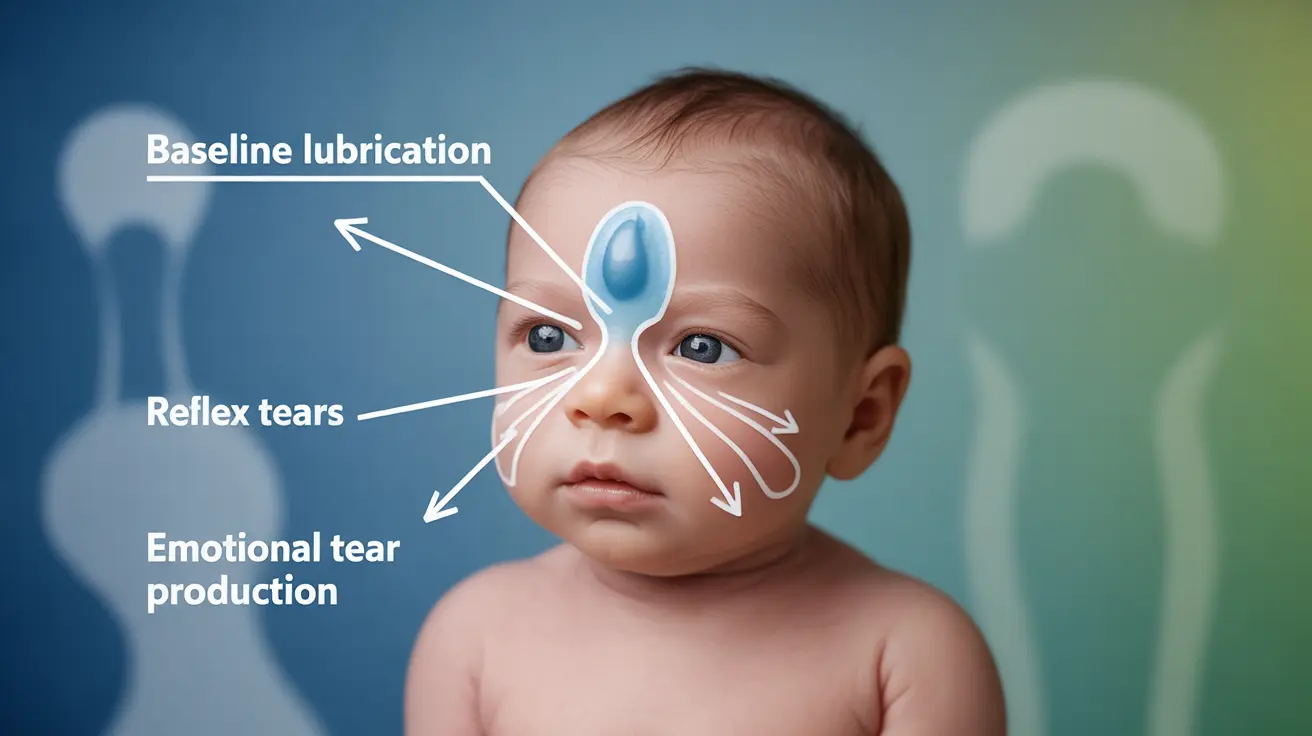As a new parent, you might notice that your newborn cries frequently but doesn't produce visible tears right away. This natural developmental process often raises questions about when babies start crying actual tears and what's normal in terms of tear production.
Understanding your baby's tear development timeline can help you better monitor their eye health and know when to seek medical attention if needed. Let's explore the fascinating journey of how and when babies develop the ability to cry tears.
The Science Behind Baby Tears
Babies are born with tear glands (lacrimal glands) that produce basal tears - the type that keeps eyes lubricated. However, the development of emotional tears follows a different timeline and involves more complex biological processes.
These glands need time to mature fully before producing the volume of tears we associate with crying. This developmental process explains why newborns can cry vigorously without visible tears in their early weeks.
Normal Tear Development Timeline
Most babies begin producing visible tears between 2 weeks and 2 months of age. However, this timeline can vary significantly among infants, and it's completely normal for some babies to start producing tears a bit later.
Early Weeks (0-2 weeks)
During this period, babies typically cry without visible tears. Their tear ducts are still developing, and they produce only enough tears to keep their eyes lubricated.
Transitional Period (2 weeks - 2 months)
This is when most babies begin producing noticeable tears while crying. The tear glands mature and can create a larger volume of emotional tears.
Established Tear Production (2+ months)
By this time, most babies have developed fully functioning tear ducts and produce visible tears regularly when crying.
Understanding Tear Production Issues
Common Concerns
Some babies might experience temporary or ongoing issues with tear production, including:
- Tears from only one eye
- Excessive tearing without crying
- Delayed tear production
- Blocked tear ducts
Signs to Watch For
While variations in tear development are normal, certain signs warrant attention:
- Persistent eye redness
- Eye discharge or crusting
- Swelling around the eyes
- Signs of eye discomfort or irritation
When to Seek Medical Advice
Consult your pediatrician if you notice:
- No tears during crying by 3 months of age
- Continuous tearing or eye discharge
- Signs of eye infection or irritation
- Asymmetrical tear production that persists
Frequently Asked Questions
- When do babies usually start crying with visible tears?
Babies typically begin producing visible tears between 2 weeks and 2 months of age, though this timeline can vary among infants.
- Why do newborn babies cry without tears in the first weeks after birth?
Newborns cry without tears because their tear ducts and glands are still developing. They produce only enough tears for basic eye lubrication during the first few weeks of life.
- Is it normal if my baby does not produce tears when crying after three months?
While some variation is normal, the absence of tears during crying after three months should be discussed with your pediatrician to rule out any underlying issues.
- What might cause a baby to have tears from only one eye or watery eyes without crying?
This could be due to a blocked tear duct, which is relatively common in infants. Other causes might include eye irritation or infection. If persistent, consult your healthcare provider.
- When should I consult a doctor about my baby's tear production or eye symptoms?
Seek medical attention if your baby shows no tears by 3 months of age, has persistent eye discharge or redness, experiences continuous tearing, or shows signs of eye discomfort or infection.




